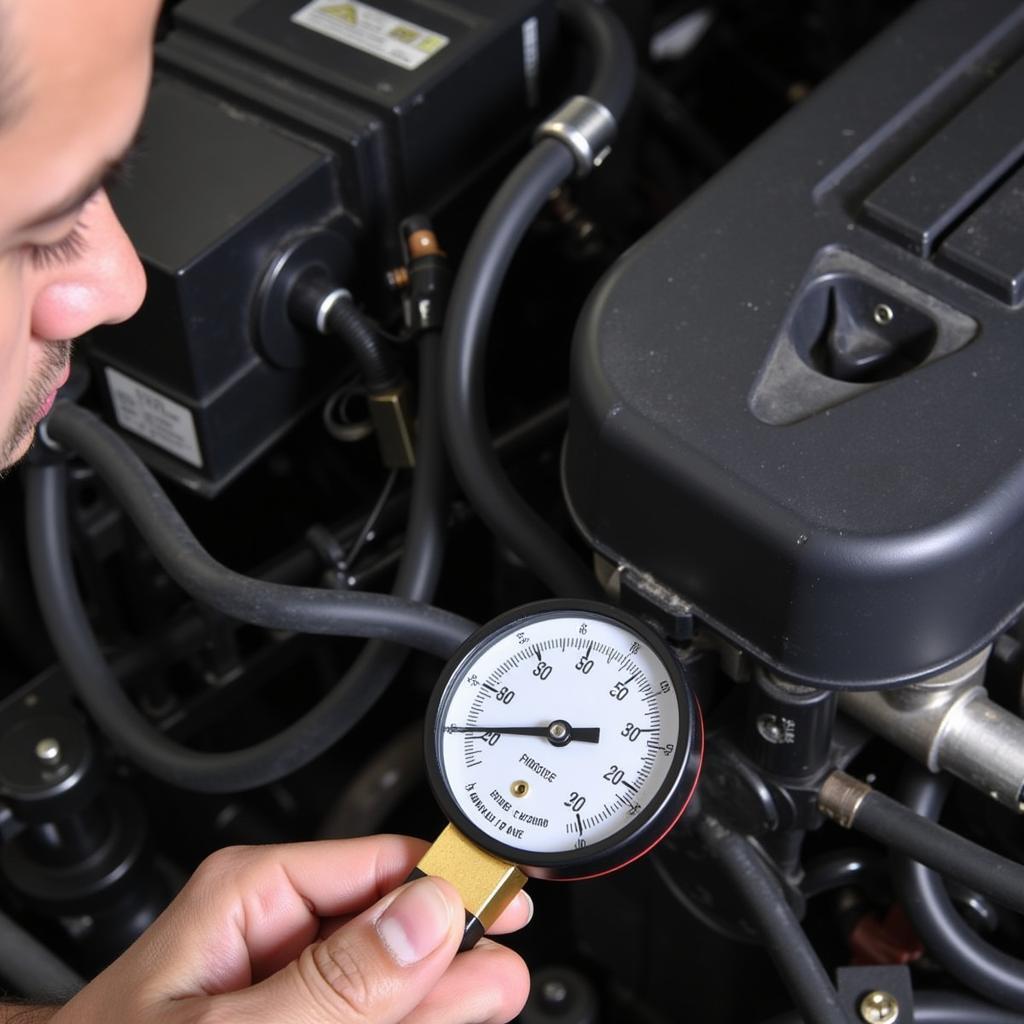Oil and water mixing inside your car engine is a serious issue that demands immediate attention. This problem can lead to costly repairs if left unchecked, and understanding its causes and solutions is crucial for every car owner. Let’s dive into the details of this “Oil Water Inside Car Engine Problem” and explore effective ways to diagnose and address it. car problems symbols
Understanding the “Oil Water Inside Car Engine Problem”
Discovering oil and water mixed inside your car engine can be alarming. This mixture, often appearing as a milky, brown sludge, indicates a breach between the oil and cooling systems. This “oil water inside car engine problem” can stem from a variety of issues, each with its own set of implications.
Common Causes of Oil in Water and Vice Versa
-
Head Gasket Failure: The head gasket seals the combustion chambers from the cooling system. A blown head gasket allows coolant to leak into the oil passages, causing the dreaded milky mixture.
-
Cracked Cylinder Head or Engine Block: Similar to a head gasket failure, cracks in these components can create pathways for coolant to mix with the engine oil. This is a more severe issue requiring extensive repairs.
-
Faulty Oil Cooler: Some vehicles use an oil cooler to regulate engine oil temperature. A leak in this cooler can introduce coolant directly into the oil.
-
Intake Manifold Gasket Leak: While less common, a leaking intake manifold gasket can also lead to coolant entering the engine’s oil passages.
Diagnosing an “Oil Water Inside Car Engine Problem”
Identifying the specific cause of the “oil water inside car engine problem” requires a systematic approach. Here’s a step-by-step guide:
-
Check the Dipstick: Look for a milky, brownish discoloration on the engine oil dipstick. This is a primary indicator of coolant contamination.
-
Inspect the Coolant: Examine the coolant reservoir for signs of oil. A thin film of oil on the surface of the coolant is a telltale sign.
-
Pressure Test the Cooling System: This test helps identify leaks in the cooling system, including the head gasket, cylinder head, and engine block.
-
Perform a Cylinder Leak-Down Test: This test checks for leaks in the combustion chambers, indicating a potential head gasket or cylinder head issue.
Identifying the Source of the Leak
Pinpointing the exact source of the leak can be challenging. A qualified mechanic can use specialized tools and techniques, such as dye tests and ultraviolet light, to accurately locate the leak.
“A thorough diagnosis is crucial. Treating the symptoms without addressing the root cause will only lead to recurring problems,” advises automotive expert, John Miller, ASE Certified Master Technician.
 Pressure Testing a Car’s Cooling System
Pressure Testing a Car’s Cooling System
Repairing the “Oil Water Inside Car Engine Problem”
The repair process depends on the underlying cause of the oil and water mixture. Here are some common solutions:
-
Head Gasket Replacement: This involves removing the cylinder head and replacing the damaged gasket.
-
Cylinder Head or Engine Block Repair: Cracks in these components can be repaired by welding or other specialized techniques. In some cases, replacement might be necessary.
-
Oil Cooler Replacement: A faulty oil cooler should be replaced to prevent further contamination.
-
Intake Manifold Gasket Replacement: Replacing this gasket is a relatively straightforward procedure.
Preventing Future “Oil Water Inside Car Engine Problems”
Regular maintenance is key to preventing future occurrences of this issue. Ensure your cooling system is properly maintained, including regular coolant flushes and pressure checks. Addressing minor leaks promptly can prevent them from escalating into more serious problems.
possible problems with a flooded car
“Preventive maintenance is always the best approach. Regular checks and timely repairs can save you a lot of money and headaches down the road,” says automotive specialist, Sarah Johnson, certified mechanic and owner of Johnson’s Auto Repair.
right there the problem car in water
Conclusion
The “oil water inside car engine problem” is a serious issue that requires immediate attention. By understanding the causes, diagnostic procedures, and repair options, you can effectively address this problem and prevent costly engine damage. Regular maintenance and prompt attention to any leaks are crucial for preventing future occurrences. Contact AutoTipPro at +1 (641) 206-8880 or visit our office at 500 N St Mary’s St, San Antonio, TX 78205, United States for assistance with your car problems.




Leave a Reply